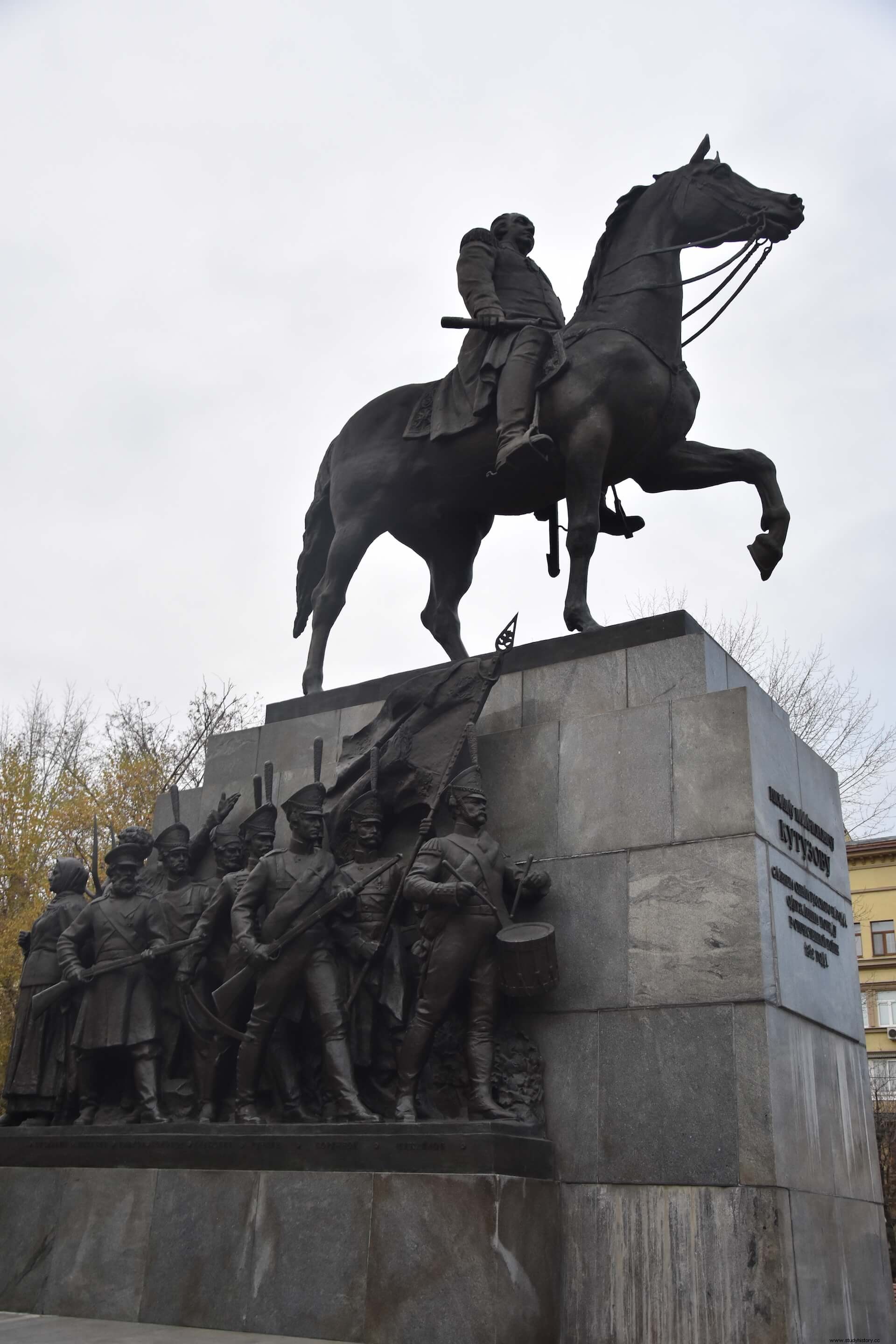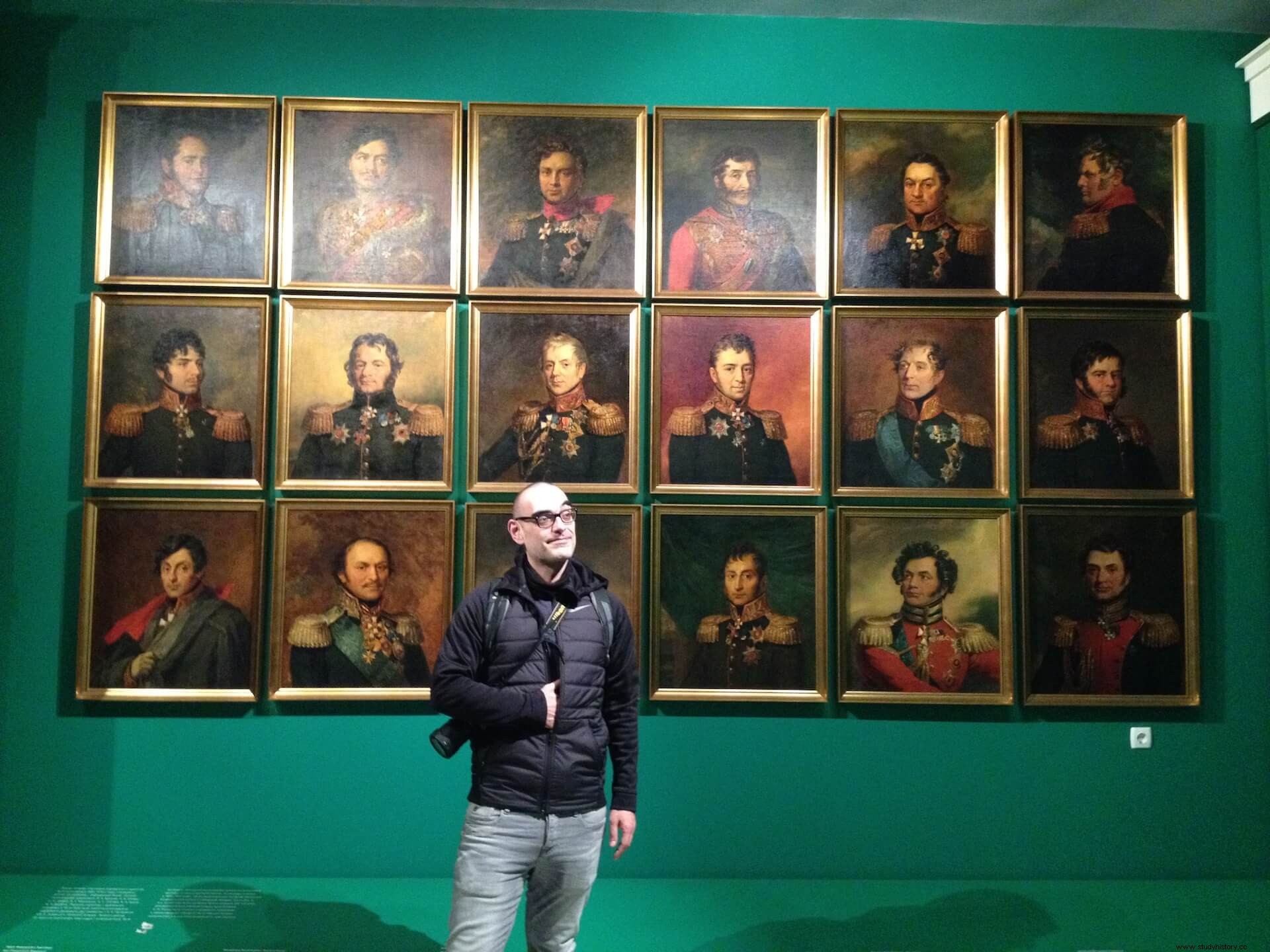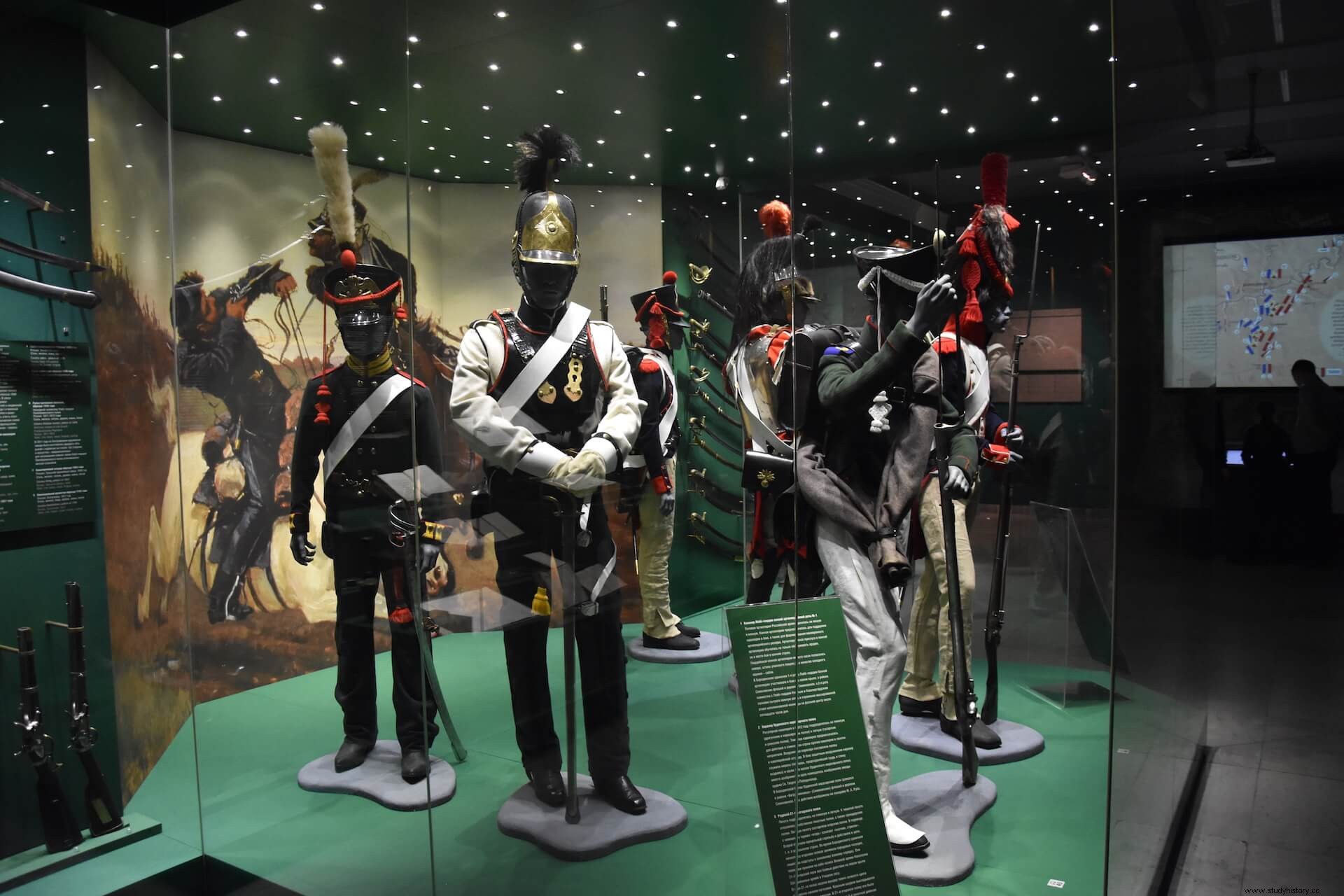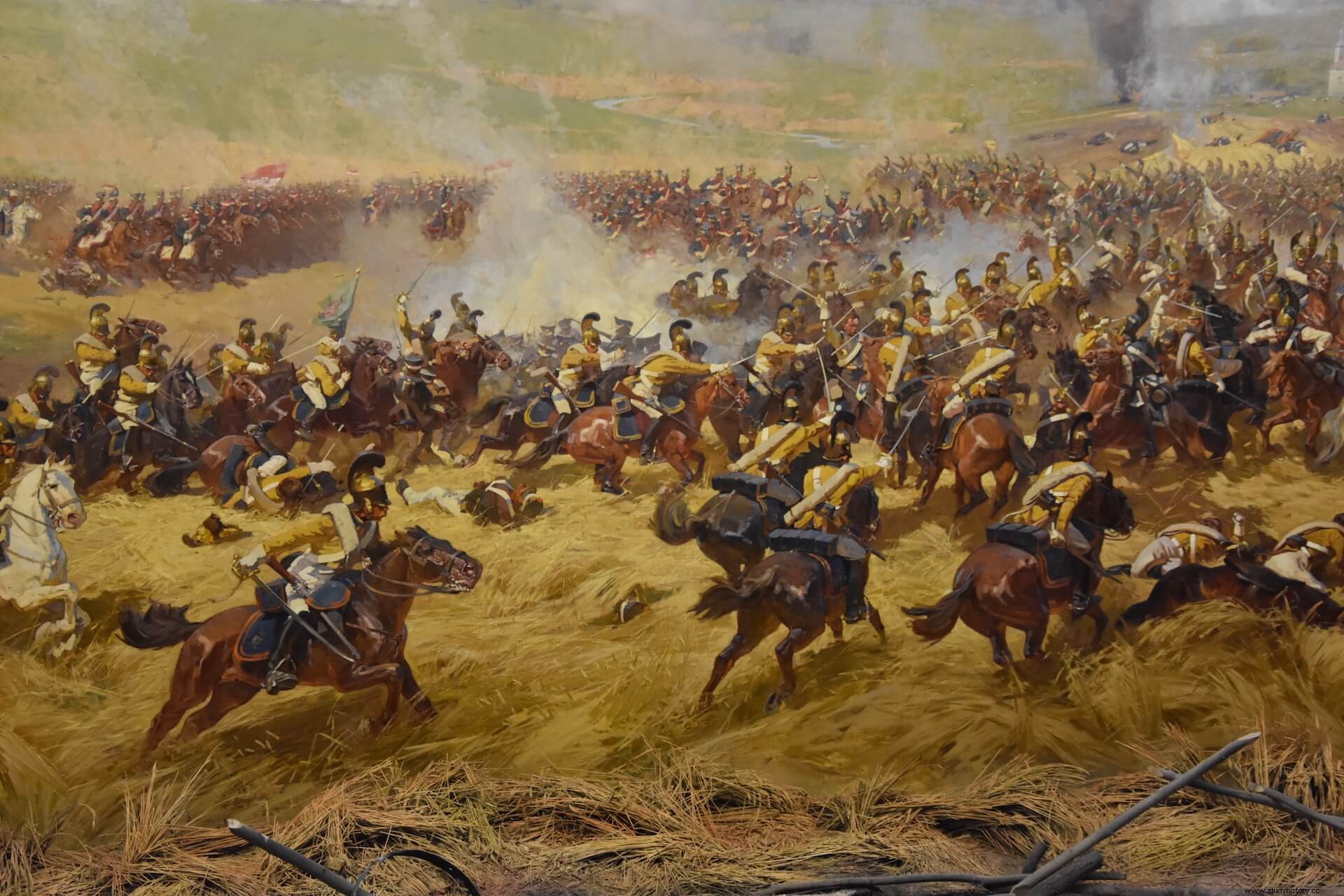
Located, how could it be otherwise, on Kutúzov Avenue (38, Kutuzovsky prospekt, Kutuzovskaya metro), next to the Arch of Triumph and close to the Museum of the Great Patriotic War (those interested in express Russification, both can be visited on the same day), the Panorama of the Battle Museum of Borodino (250 rubles the entrance, about €3.70, 45 min. of visit; except grognards like me, you comrades, go early), one of the two museums dedicated to the Napoleonic wars that Moscow houses along with the Museum of the War of 1812, is simply delicious.

After passing by the statue of the General Kutuzov (for which the Russians profess authentic devotion) erected abroad, and recreate ourselves in the complex in the complex sculpture that adorns three of the sides of its pedestal and sister to all the protagonists of the War of 1812, already generals, soldiers , militiamen or civilians, we enter the building.


The visit can be divided into three parts. In the first place, an entrance hall where we can enjoy the portraits of the most outstanding Russian generals of the 1812 campaign, starting with Kutúzov and Blarclay de Tolly and continuing with Bagration, Platov, Rayevski, Kutaisov, Ouvarov, Tuchkov, etc. as well as other emblematic paintings by authors such as Mazurovsky, Northen or the spectacular work of the contemporary Averyanov, executed for the bicentenary of the Napoleonic invasion of Russia and with which our readers are already very familiar. The exhibition also includes showcases with a small but select sample of uniforms and weapons from the time of both armies, arranged with great taste.


From here you can access the authentic leitmotif of the Museum, the panoramic painting of the battle of Borodino executed by the French-born Russian battle painter Franz Roubaud (Odessa, 1856- Munich, 1928), also author of the panorama of the siege of Sevastopol (1854-1855), and which was inaugurated in 1912 to commemorate the centenary of the battle. Despite the enormous dimensions of the painting, the level of detail is truly amazing, as can be seen in the following video and photos.


The sample does not end there, since on the way to At the exit we find a precious collection of engravings and showcased pieces, from musket and cannon balls from the battlefield, weapons, etc., paintings related to the Napoleonic withdrawal from Russia and a diorama with a tender scene in which several Russian light horsemen fraternize with a young French drummer.

In addition to having the information in Russian and partially in English both on the main panels and on the cartouches (at least in the titles), the magnificent Panorama Museum of the Battle of Borodino is state-of-the-art, since it has some detailed interactive where you can follow the battle, and a Mobile application (it has open Wi-Fi) that extends the information of the most emblematic pieces through a qr code system. Oh, and from a modest little shop run by a kind lady that we no doubt loot as many Cossacks from the Urals.
